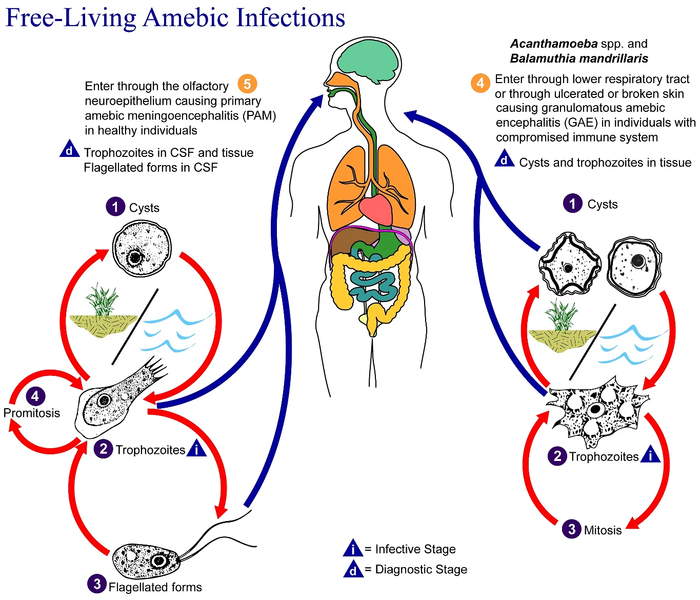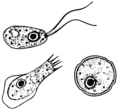Tiedosto:Free-living amebic infections.png
Siirry navigaatioon
Siirry hakuun

Tämän esikatselun koko: 700 × 600 kuvapistettä. Muut resoluutiot: 280 × 240 kuvapistettä | 560 × 480 kuvapistettä | 896 × 768 kuvapistettä | 1 195 × 1 024 kuvapistettä | 1 365 × 1 170 kuvapistettä.
Alkuperäinen tiedosto (1 365 × 1 170 kuvapistettä, 715 KiB, MIME-tyyppi: image/png)
Tiedoston historia
Päiväystä napsauttamalla näet, millainen tiedosto oli kyseisellä hetkellä.
| Päiväys | Pienoiskuva | Koko | Käyttäjä | Kommentti | |
|---|---|---|---|---|---|
| nykyinen | 2. helmikuuta 2023 kello 11.24 |  | 1 365 × 1 170 (715 KiB) | Materialscientist | https://answersingenesis.org/biology/microbiology/the-genesis-of-brain-eating-amoeba/ |
| 20. heinäkuuta 2008 kello 08.30 |  | 518 × 435 (31 KiB) | Optigan13 | {{Information |Description={{en|This is an illustration of the life cycle of the parasitic agents responsible for causing “free-living” amebic infections. For a complete description of the life cycle of these parasites, select the link below the image |
Tiedoston käyttö
Seuraava sivu käyttää tätä tiedostoa:
Tiedoston järjestelmänlaajuinen käyttö
Seuraavat muut wikit käyttävät tätä tiedostoa:
- Käyttö sivustolla de.wikibooks.org
- Käyttö sivustolla en.wiktionary.org
- Käyttö sivustolla fr.wikipedia.org
- Käyttö sivustolla gl.wikipedia.org
- Käyttö sivustolla hr.wikipedia.org
- Käyttö sivustolla is.wikipedia.org
- Käyttö sivustolla it.wikipedia.org
- Käyttö sivustolla pl.wikipedia.org
- Käyttö sivustolla te.wikipedia.org
- Käyttö sivustolla vi.wikipedia.org
- Käyttö sivustolla www.wikidata.org
- Käyttö sivustolla zh.wikipedia.org




